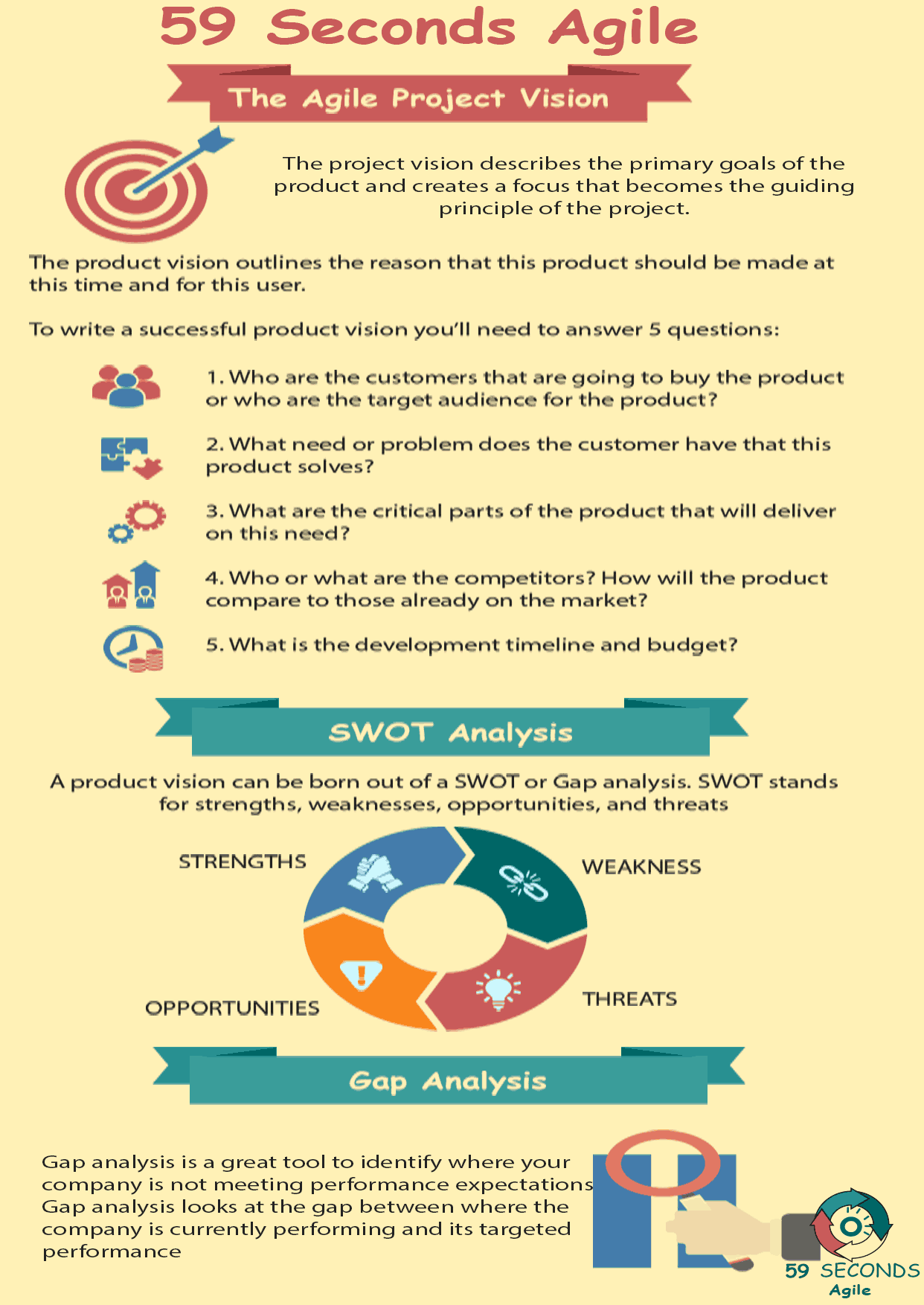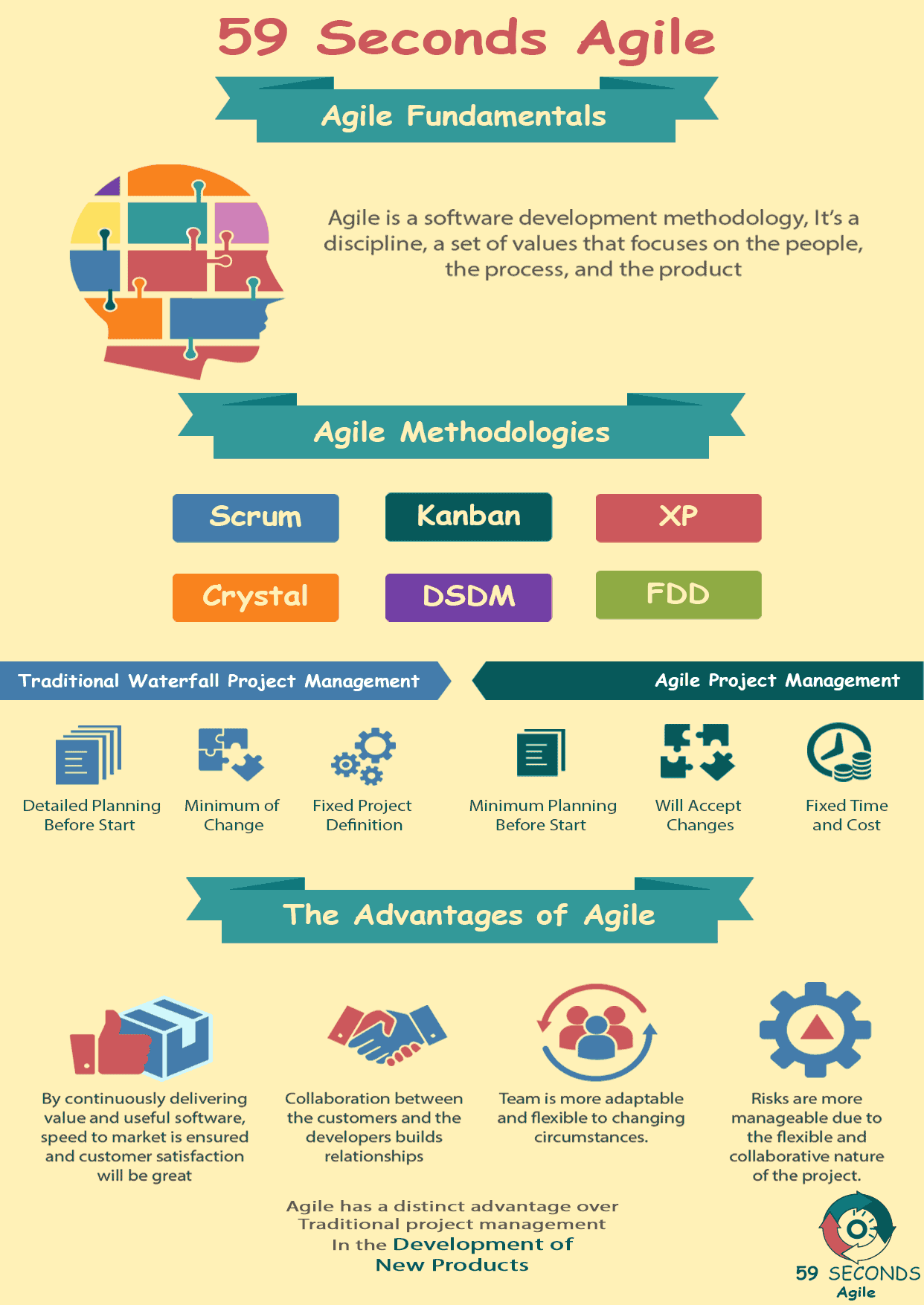This article looks to discuss Joint Application Development & the Project Vision. It starts with an in depth analysis of Joint Application Development, before moving on to discuss Prioritising with the Product Vision.
The Agile Fundamentals
A 59 Seconds Agile Video Animation
Joint Application Development & the Project Vision – Part 2
A 59 Seconds Agile Article
Joint Application Development
This approach brings the different customers into the initial planning meeting. This occurs throughout the iterations which leads to better client satisfaction and potentially faster development. The vision is determined together while the Scrum Master facilitates the discussion. The key roles needed in the meeting include the Executive Sponsor (key decision maker), Facilitator (Scrum Master), IT Representative (developer), End-User (the person who’s problem is being solved), Documenter (Product Owner), and Observer (optional but could act as arbiter later in the process).
The Joint Application Development Meeting
The JAD meeting will act in place of the traditional approaches of gathering requirements. Like reading the documentation, conducting interviews, and watching how people use the product. It instead gathers all the information needed rapidly to get to the end-goal and product vision faster. Coming out of this meeting, you will have agreed upon a product vision. You will also have agreed upon many other key factors regarding the product.

Joint Application Development: Prioritising with the Product Vision
At this point, your team has a product vision and has gathered the necessary requirements to execute on the product. Even at this point, there are things to keep in mind as the Scrum Master and the rest of the Scrum Team lays out the work. With each day and each sprint, the team will need to make choices that either get the product closer to that product vision or will develop something that’s tangential to the goal. It’s important for the Scrum Master to work with the team to make sure they are executing efficiently on the true product vision.
Joint Application Development: New Feature
Along the way, the team may discover new features that could make the product a little bit better but if that new feature isn’t driving towards the product vision, then it may not be worth prioritizing and it is the Scrum Master’s job to redirect the attention to the original task. For example, while developing a feature to make an Excel upload easier. The engineer may be inclined to also include the ability to upload other file formats but since the end-user indicated that they only work in Excel, then these other formats aren’t necessary at this time and should be de-prioritized.
Our Favourite Agile Books
We found these books great for finding out more information on Agile Scrum:
Prioritising with the Product Vision
Coming back to the product vision when making decisions is important to streamlining the process and iterating faster.

As you can see, the product vision is key for not only defining the product but for faster development to that core product. By knowing who the end-user is, what problem the product solves, and the other constraints of the project, it allows the team to stay focused and means that the stakeholder is getting the product they need. These vision statements also ensure the team is focused on solving one problem at a time and everyone on the team knows what that focus is. The product vision is the guiding principle that will ensure the developed product will solve the gap or problem for the end-user.
Prev <— Continue Reading —> Next
User Stories Applied
A 59 Seconds Agile Book Review
User Stories Applied by Mike Cohn is one of our favourite books on Agile User Stories. The book starts with an overview into user stories, and details what a user story is and the different aspects of them. He then discusses how to go about writing a user story, and provides details of the INVEST criteria that can be used to determine if the story is meeting all of its objectives. Next Mike gives an in depth discussion of who user stories are written for and where to begin when gathering the details for them. The book then discusses acceptance testing user stories, including how to go about specifying these criteria and the responsibilities of the development team and customers during this process.
Prev <— Continue Reading —> Next
Learn More
Agile Project Management Training Courses
Agile Fundamentals
A 59 Seconds Agile Infographic


